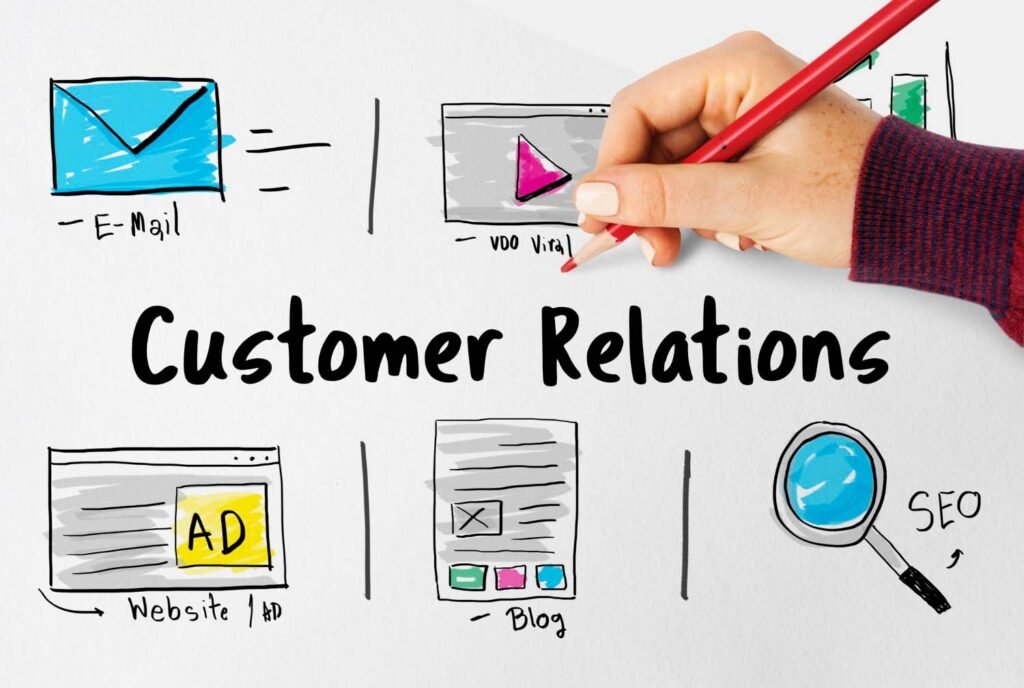In today’s hyper-competitive market, simply acquiring customers isn’t enough; true, sustainable success hinges on customer retention. And what’s the key to keeping customers loyal and engaged?
Understanding their experience, from the very first touchpoint to long after a purchase. Welcome to the world of customer journey mapping, an expert-level approach that’s more critical than ever in 2025.
This isn’t just about creating a flowchart; it’s about deeply empathizing with your customers, identifying their pain points, and proactively shaping their experience to foster lasting loyalty. As customer expectations continue to soar, with 86% willing to pay more for a quality customer experience, a meticulously crafted journey map is no longer a luxury-it’s a foundational element of any thriving business.
Why Customer Journey Mapping is Non-Negotiable in 2025
First and foremost, let’s be clear: customer experience (CX) has definitively overtaken price and product as the most significant brand differentiator. In an environment where 73% of customers expect brands to personalize their offerings, understanding the intricacies of their journey is paramount.
A well-executed customer journey map provides invaluable insights into customer behavior and preferences, allowing businesses to pinpoint exactly where to channel their resources for maximum impact. This focus on putting customers first is a cornerstone of modern business marketing success.
Furthermore, the financial implications are compelling. A mere 5% increase in customer retention can lead to a 25% rise in profits. Companies excelling at omni-channel customer engagement strategies retain around 89% of their customers, compared to just 33% for those without such strategies.
Customer journey mapping is the tool that enables businesses to design these effective, cohesive experiences, directly impacting customer satisfaction, retention, and ultimately, business growth.

The Core Components of an Expert-Level Customer Journey Map
Creating a truly effective customer journey map in 2025 involves more than just listing touchpoints. It requires a holistic view that incorporates data, empathy, and strategic foresight. Let’s break down the essential components that experts focus on.
Deeply Understanding Your Customer Personas
Before you can map a journey, you need to know who is taking it. This means creating detailed customer personas that go beyond basic demographics. Experts in 2025 emphasize understanding:
- customer goals and motivations;
- pain points and frustrations at various stages;
- behaviors and channels preferred for interaction.
Developing these rich personas allows businesses to tailor experiences and communications with precision, recognizing that different customer types will have varying needs and expectations. This deep understanding is fundamental to personalized interactions, which 80% of consumers state makes them more likely to purchase.
Meticulously Identifying and Analyzing All Touchpoints
The next critical step is to document every single interaction a customer has with your brand, from initial awareness to post-purchase support and advocacy. These key touchpoints can occur across a multitude of channels-your website, social media, email, customer service interactions, in-store experiences, and more.
For each touchpoint, it’s essential to gather both quantitative data (like website analytics and conversion rates) and qualitative data (such as customer feedback, support tickets, and social listening insights). This allows you to quantify their effect on the overall customer experience and identify areas for improvement.
Experts stress the importance of ensuring cross-channel consistency, as 73% of customers expect smooth interactions across all platforms.
The Five Crucial Stages of the Customer Journey (and How to Optimize Them)
While specific journeys can vary, most customer experiences can be mapped across five core stages. Understanding and optimizing each of these is key to improving retention. Let’s delve into what experts prioritize at each phase in 2025.
Stage 1: Awareness – Making a Powerful First Impression
This is where potential customers first become aware of your brand and what you offer. The goal here is to capture attention and make a strong, positive first impression. In 2025, this means:
- improving your SEO through meticulous keyword research and content optimization to rank higher for relevant search terms;
- creating valuable content (blog posts, videos, infographics) that addresses your target audience’s pain points and questions;
- leveraging social media by sharing engaging content where your audience is active and using targeted advertising based on demographic and behavioral data;
- collaborating with influencers to reach wider audiences and build initial credibility.
A seamless and informative awareness stage sets the foundation for the rest of the customer’s journey.
Stage 2: Consideration – Guiding Informed Decisions
Once potential customers become aware of your offerings, they enter the consideration stage, during which they evaluate your products or services against their needs and competing options. Your goal at this stage is to provide them with the information and confidence required to choose you.
This involves offering detailed product information, case studies, and comparisons, as well as presenting customer reviews and testimonials to build trust. Additionally, utilizing retargeting campaigns helps keep your brand top-of-mind. It is also essential to ensure that your website and other platforms provide a seamless, frictionless experience for research and exploration.
By making the buying process as effortless as possible at this stage, you can increase customer loyalty by as much as 94%.
Stage 3: Purchase – Streamlining the Transaction
This is the critical conversion point where a prospect becomes a customer. The focus here is on making the purchase process as simple, secure, and reassuring as possible. Think of Amazon’s fast browsing, shopping suggestions, and immediate customer response-all designed to create a seamless experience. Key optimizations include:
- a simplified checkout process with minimal steps;
- multiple secure payment options;
- clear communication regarding shipping, returns, and support;
- reassurances like trust seals and satisfaction guarantees.
Reducing effort and anxiety at the purchase stage is paramount for conversion and setting a positive tone for future interactions.
Stage 4: Retention – Fostering Loyalty Beyond the Sale
This is where expert-level customer journey mapping truly shines in boosting customer retention. The post-purchase experience is often underestimated, yet 80% of future revenues are attracted from 20% of current clients.
Brands like Starbucks excel in leveraging their mobile app to gather data, anticipate customer needs, and offer personalized experiences, such as suggesting previous orders or providing location-based notifications. Central to their approach are personalized onboarding and welcome communications, proactive customer support and follow-up, as well as loyalty programs and exclusive offers designed for repeat customers.
Additionally, they prioritize gathering and acting on customer feedback, demonstrating that they value input and are committed to continuous improvement. Companies that systematically analyze these feedback patterns can make targeted enhancements to the customer experience, which significantly increases retention rates.
Stage 5: Advocacy – Turning Customers into Promoters
The ultimate goal is to transform satisfied customers into loyal advocates who actively promote your brand. This stage is achieved by consistently exceeding expectations throughout the entire journey. Strategies to encourage advocacy include:
- requesting reviews and testimonials at opportune moments;
- implementing referral programs that reward both the advocate and the new customer;
- creating shareable content and engaging with customers on social media;
- building a strong brand community where customers feel connected and valued.
To successfully turn customers into passionate advocates, consistently exceed their expectations at every touchpoint. Encouraging advocacy through reviews, referrals, shareable content, and community engagement strengthens brand loyalty and drives growth.

Leveraging Technology and Data in 2025 Customer Journey Mapping
The sophistication of customer journey mapping in 2025 is heavily reliant on advanced tools and technologies. AI-powered CX platforms like XEBO.ai are becoming differentiators, offering real-time customer data, predictive analytics, and hyper-personalized experiences that drive retention and satisfaction. Predictive analytics, in particular, enable forecasting of customer needs and can lead to an up to 15% higher retention rate.
Furthermore, mass personalization through AI allows organizations to deliver highly individualized interactions at scale. Visualization platforms like Lucidchart and Smaply help map intricate journeys and identify pain points, while integration platforms such as Salesforce, HubSpot, and Zapier ensure seamless customer interactions across channels for omnichannel consistency.
The key is to use real-time data; outdated customer data leads to artificial engagements and missed opportunities.
Avoiding Common Pitfalls in Customer Journey Mapping
Even with the best intentions, businesses can make mistakes when mapping customer journeys. Experts in 2025 highlight several critical areas to watch out for:
- Lack of cross-channel consistency: This leads to fractured experiences. Customers expect smooth transitions between your website, app, social media, and support channels.
- Underestimating emotional intelligence: 70% of the buying experience is determined by how customers feel they are being treated. Ignoring the emotional aspect of the journey can kill customer relationships.
- Discounting the post-purchase experience: As mentioned, this is a massive missed opportunity for building long-term loyalty and generating future revenue.
- Failing to act on insights: A journey map is only valuable if it leads to actionable improvements. It should be a living document that informs ongoing optimization efforts.
By proactively addressing these potential pitfalls, businesses can create customer journey maps that are truly effective in improving satisfaction and retention.
The Journey to Lasting Customer Loyalty
Mastering customer journey mapping in 2025 is an ongoing commitment, not a one-time project. It requires a customer-centric mindset, a dedication to data-driven insights, and a willingness to adapt and evolve.
By meticulously identifying customer personas, mapping all touchpoints, analyzing emotions and pain points, and leveraging the right technologies, businesses can transform their customer experience from a series of disconnected interactions into a seamless, personalized, and highly satisfying journey.
The rewards-increased customer retention, higher satisfaction, greater loyalty, and ultimately, enhanced profitability-make this expert-level approach an essential investment for any business serious about thriving in today’s competitive landscape. Remember, the companies that consistently win are those that understand and proactively shape the entire customer experience, fostering relationships that last long after the initial purchase.

